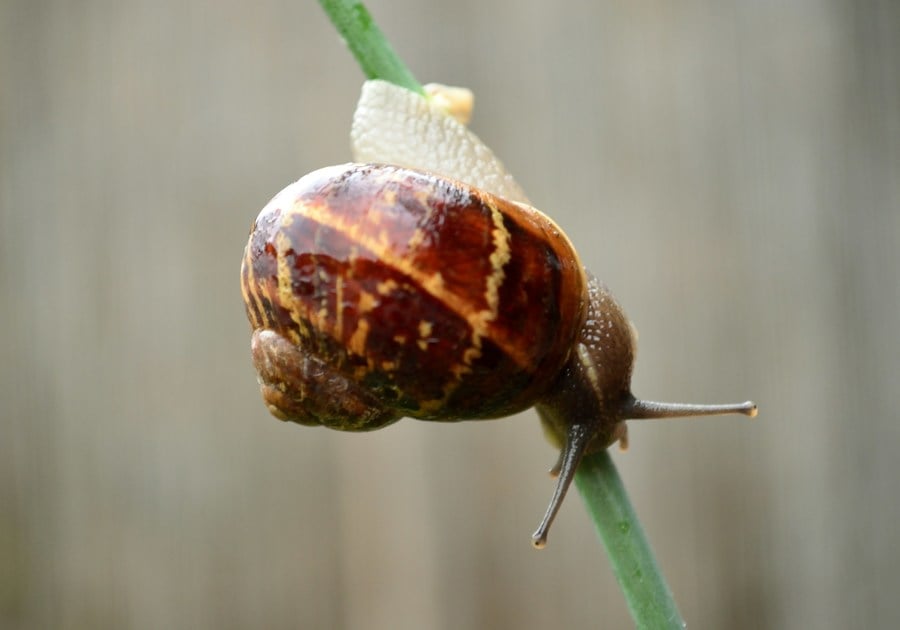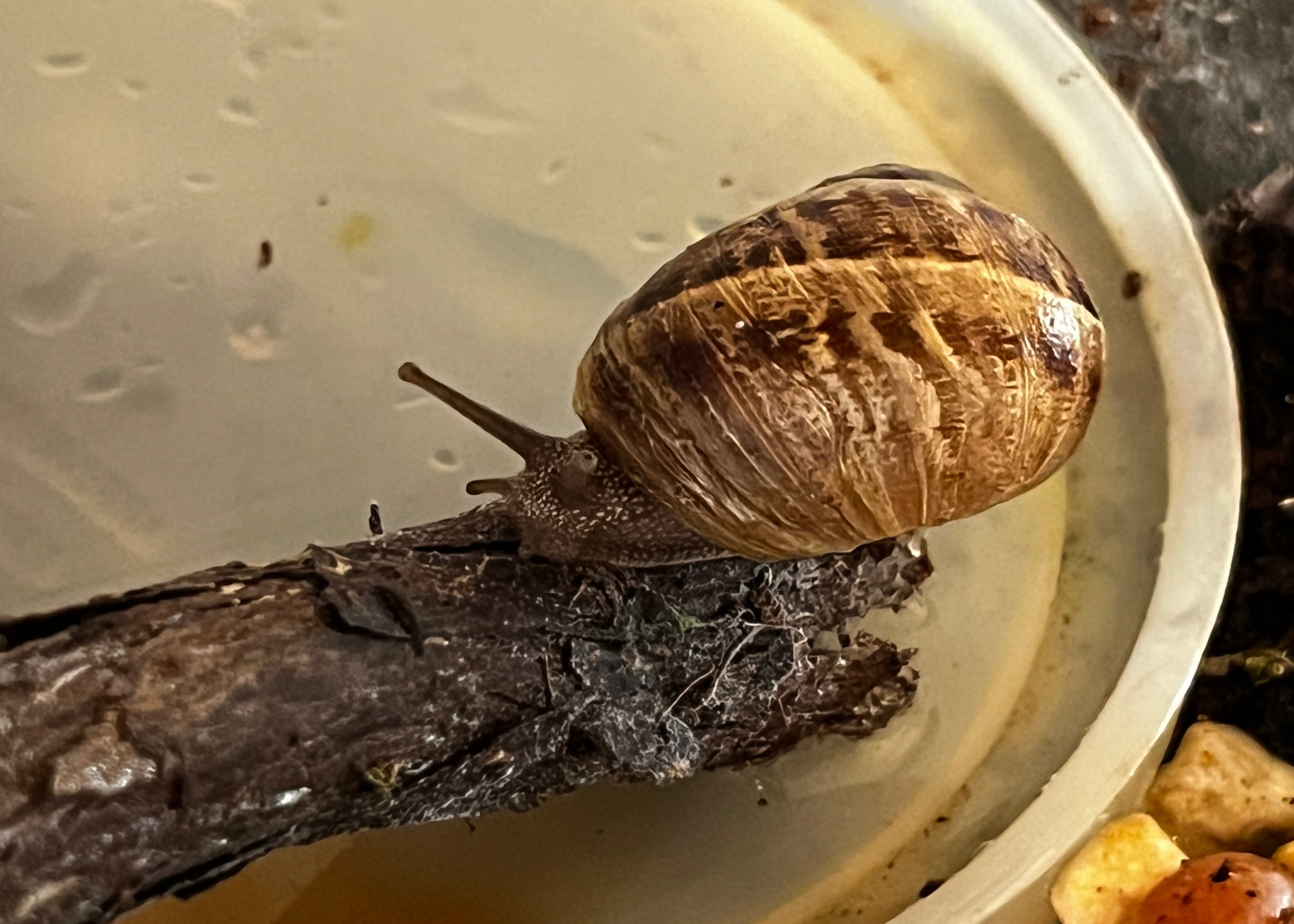Have you ever seen a snail hiding in its shell for a long time? Sometimes, snails take long naps. In fact, there are two types of naps they take - hibernation and aestivation (pronounced eh-stuh-vay-shun). Let’s learn what these terms mean and how snails get ready for their big sleep.
Hibernation
In the winter, it can get really cold, and snails don’t like that! They don't have cozy clothes and hats to put on, so, they go into hibernation. Yup...just like bears, they take a long winter sleep to stay safe and warm. During hibernation, a snail stays tucked inside its shell, covered by a special layer of slime that protects it from the cold. It doesn’t eat, drink, or move much until the weather gets warmer.
Aestivation
On the other hand, if it’s too hot or dry in the summer, snails can also take a break! This is called aestivation. Just like in hibernation, the snail hides in its shell, but this time, it’s to stay cool. They might stay hidden until it rains again or the weather cools down. This helps them survive during hot summers when it’s too dry for them to be out and about.
So what now??
It's really important to know that when snails are in a state of hibernation or aestivation, we shouldn't disturb them or take them from their safe spots unless you're prepared to care for them yourself! BUT if you are prepared to have one as a little friend, read on to find out how you can build a home for garden snails from first hand experience!
My littles found a garden snail at their grandmother's house and named it "Carl The Wagon" - after a week of having Carl in a plastic shoe tupperware, we decided to build a proper habitat. We learned a lot along the way and would like to share with you our set up. Enjoy pictures of Carl as well!
How to Build a Snail Terrarium
Want to create a cozy home for a garden snail? Building an indoor terrarium is much easier than you might think because snails don't need much more than they already have outdoors. Dirt, leaves, something to climb on, and water! They don't require a lot of room either, so you can start small and expand as you get to know your friend over time. So, let’s make a terrarium where your snail can live and explore!
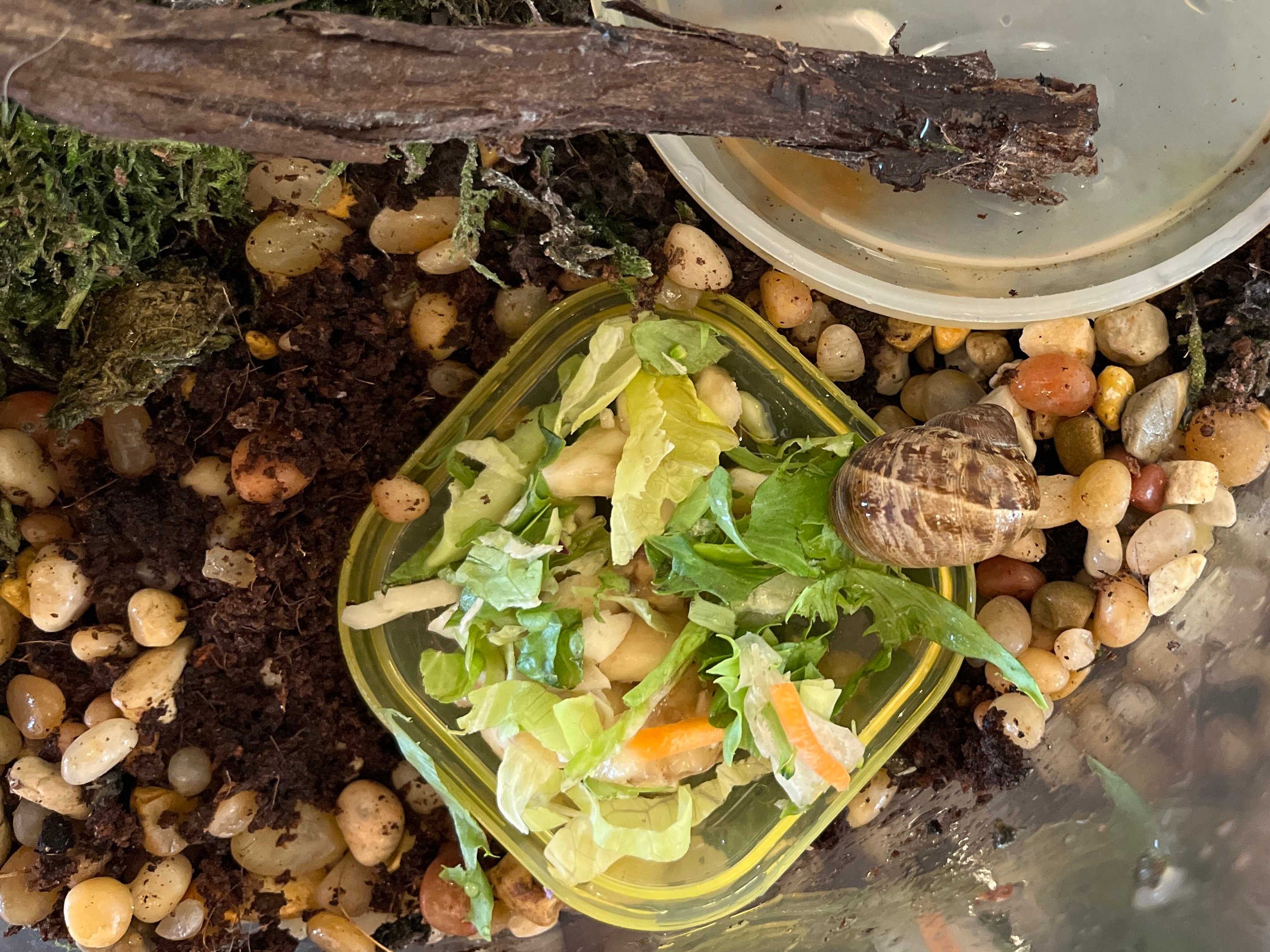
What You’ll Need:
- A clear plastic or glass container with a lid with air holes
- Soil (garden soil works great)
- Small rocks or pebbles
- Moss or leaves
- A spray bottle of water
- A shallow dish for food and water for them to bathe in
- Some twigs or bark for hiding spots
Steps to Build the Terrarium:
- Prepare the Container: Find a clear container that will be your snail’s new home. Make sure the lid has small air holes, so your snail can breathe.
- Layer the Bottom: Add a layer of small rocks or pebbles to the bottom of the container. This helps with drainage.
- Add the Soil: On top of the rocks, put in some soil. Make sure it’s a few inches deep so the snail can burrow if it wants to.
- Decorate with Nature: Snails love natural places, so add some moss, leaves, and twigs. This will make the terrarium feel more like a garden!
- Keep It Moist: Use your spray bottle to lightly mist the inside of the terrarium. Snails need moisture, but don’t make it too wet—just damp!
- Create a Hiding Spot: Snails love to hide, especially during the day. Place a small piece of bark or a rock in the terrarium where your snail can hide and rest.
- Snail Baths! Though not entirely necessary, something we've found our snail likes to do is take a bath every so often. We offer a tupperware lid with water and place our snail in it for a little while. Our snail really seems to enjoy itself and stretches out nice and long, exploring around and then eventually making it's way back out. Make sure the water is very shallow, just enough to cover the surface of the lid. Once your snail is done, take the lid out.
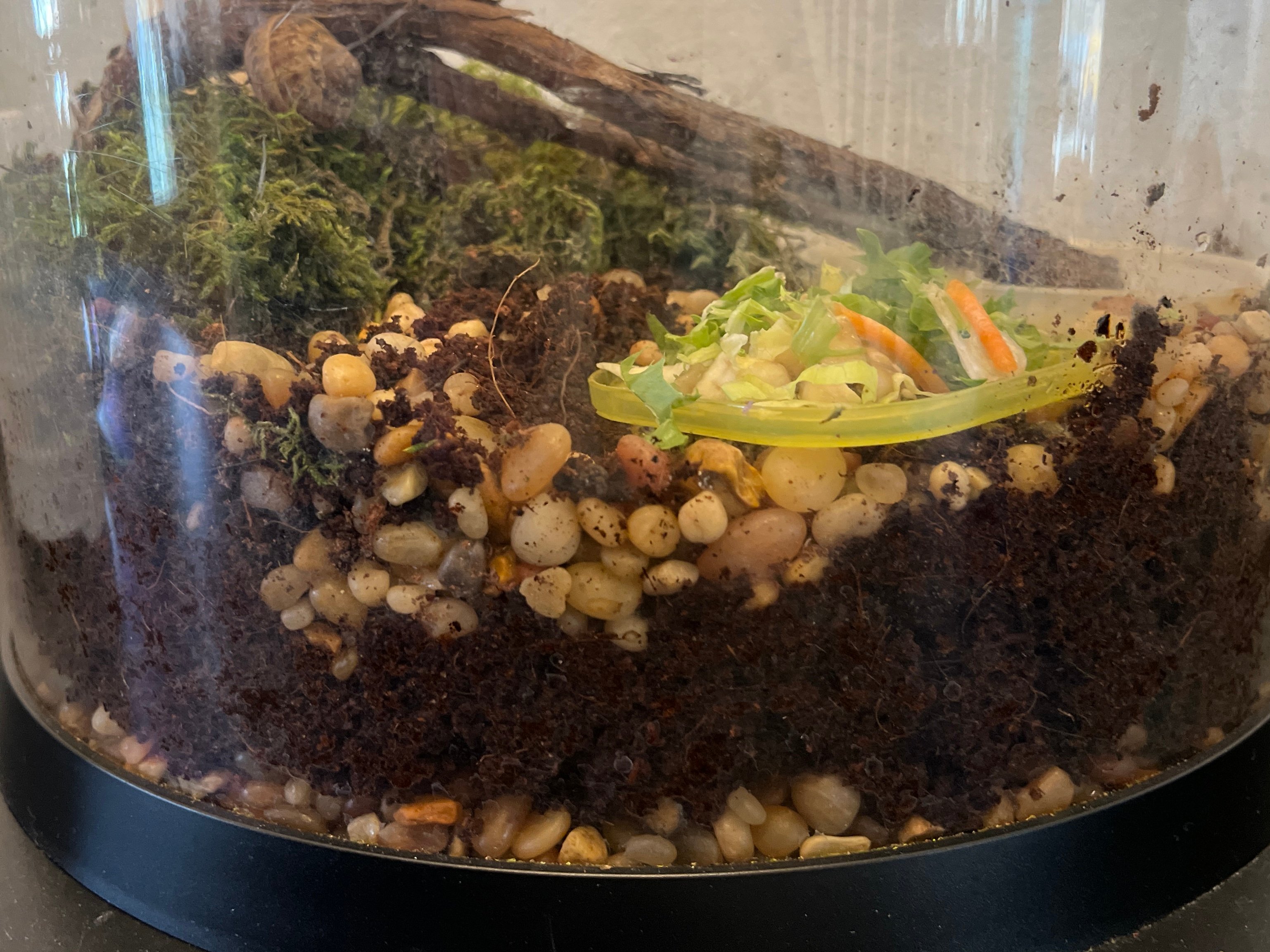
What to Feed Your Snail
Snails are easy to feed, and they love munching on fresh veggies and fruits. Here are some of their favorites:
- Lettuce
- Cucumber slices
- Carrots
- Apples
- Zucchini
- Bananas
Please note:
- All food should be chopped up into 1/4" size pieces or smaller. You can also do shreds, like lettuce, zucchini peels, etc.
- Place the food in a shallow dish so it doesn’t get buried in the soil. Remember to give your snail fresh food every day and take out any leftovers, so they don’t rot.
- What not to feed your snails: acidic foods like oranges, pineapple, and even tomatoes, as well as anything with salt!
- For drinking water, snails don’t need a dish. They drink droplets of water from the sides of the terrarium, so lightly mist the container with your spray bottle every day.
Snail Care Tips:
- Moisture is Key: Snails need a damp environment to stay happy and healthy. Mist their terrarium daily (or every other day), but don’t overdo it!
- Keep it Clean: Clean the terrarium once a week by replacing the soil and wiping down the sides.
- Handle Gently: Snails are delicate, so always pick them up carefully by the shell.
Now you're all set to take care of your garden snail friend! Whether it's hibernating in the winter or aestivating in the summer, your snail will love having a safe, cozy home.
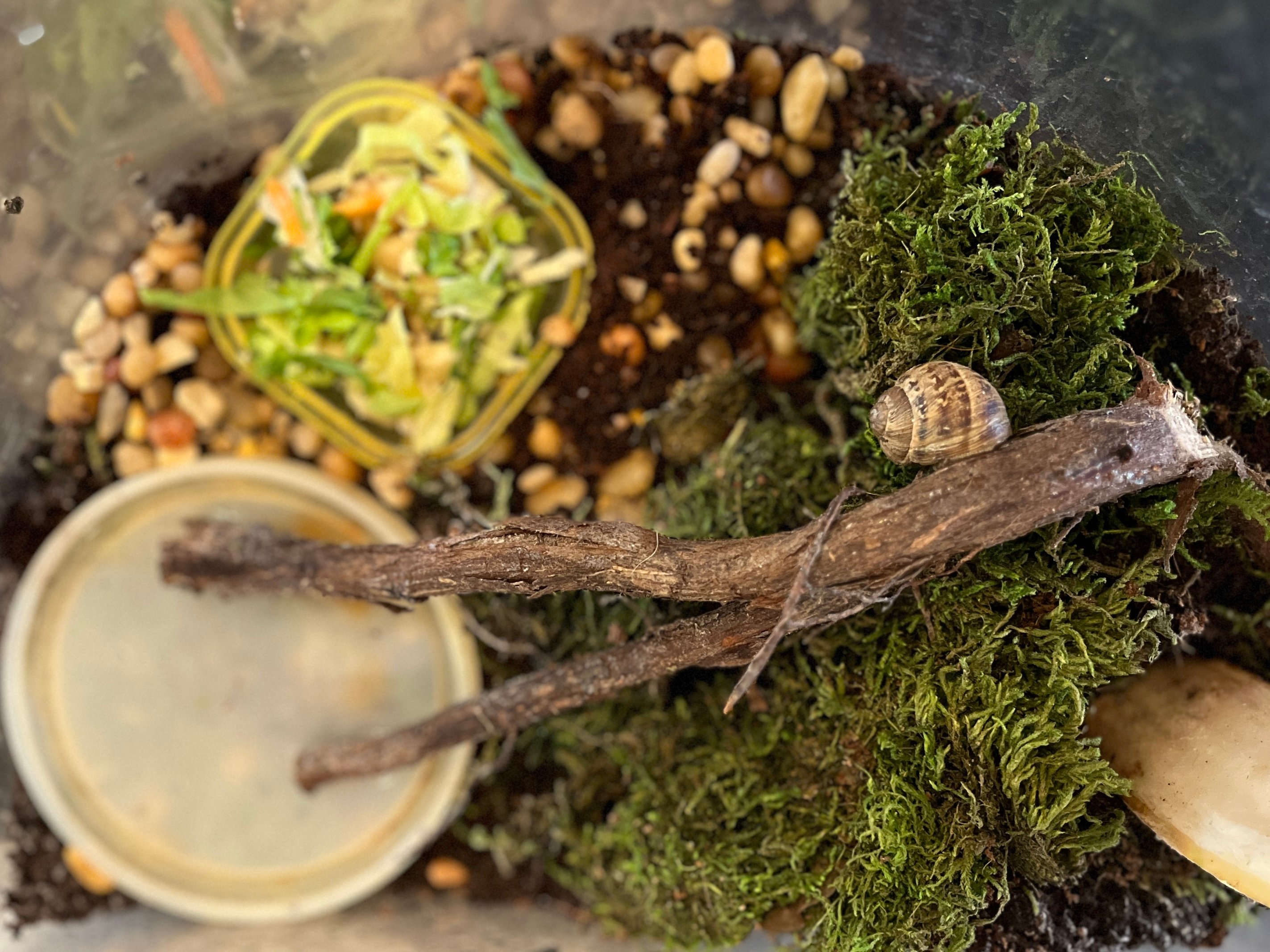
Fun Fact: How Long Can a Garden Snail Live?
Did you know garden snails can live for quite a while if they are well taken care of? In the wild, snails usually live around 2 to 5 years. But in a cozy terrarium, with good food and a safe environment, they can live up to 10 years! That means you could have your little snail friend for a long time if you give it the right care and attention.
By building a comfy home and making sure they have fresh food and moisture, you can help your snail live a happy, long life!
A note from the publisher:
The MacaroniKID San Fernando Valley West page covers local events covering the areas of Canoga Park, Winnetka, West Hills, Chatsworth, Northridge, Porter Ranch, Granada Hills and Woodland Hills.
If you or anyone you know has events you'd like to include on our page, feel free to submit them here at no cost!
Please subscribe here to receive the FREE MacKID SFV West weekly newsletter so you can be the first to know about upcoming events.

